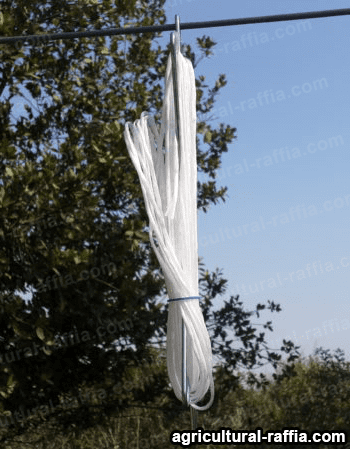Sustainable Crop Support: The Versatility of Agricultural Raffia.
as farmers often need to move their crops from one location to another.
Additionally, raffia is also resistant to rotting and decay, making it an excellent choice for providing support for crops that may be exposed to moisture. Third, raffia is highly absorbent, making it an ideal material for providing support for crops that require extra hydration. The fibers in raffia are able to absorb moisture from the air, which allows them to slowly release it to the plants. This helps to ensure that the plants receive the necessary amounts of moisture without becoming over-watered. Additionally, the absorbency of raffia also helps to protect the plants from strong winds, as the fibers are able to act as a barrier to protect them. Finally, raffia is also an environmentally friendly material. It is biodegradable, meaning that it can be broken down and absorbed back into the environment without causing any harm.
Additionally, raffia is also renewable, meaning that it can be harvested again and again without depleting the natural resources. This makes it an ideal choice for farmers who are looking for a sustainable and eco-friendly way to provide support for their crops. It is highly durable, resistant to damage from weathering, lightweight, and absorbent, making it an ideal choice for providing support for plants. Additionally, it is also biodegradable and renewable, making it an environmentally friendly choice for farmers who are looking for a sustainable solution. For these reasons, raffia is an excellent option for providing support for crops in the agricultural industr

Agricultural raffia is an incredibly popular material among farmers due to its many advantageous properties and multiple uses.
This makes it an excellent choice for tying, binding, and carrying heavy loads. It is also highly durable, meaning that it won’t easily fray or break down over time, allowing it to last for many years of use.
Another advantage of raffia is its versatility. Raffia finds extensive use in the agricultural sector, from securing plants and trees to reinforcing hay bales, and even in tethering livestock effectively. This makes it an essential tool for a variety of farming activities. The third major benefit of agricultural raffia is its cost-effectiveness. Raffia is a relatively inexpensive material, allowing farmers to purchase it in large quantities without breaking the bank.
Its low cost also makes it a great choice for small-scale farmers who may not be able to afford more expensive materials. In addition to its strength, versatility, and cost-effectiveness, raffia is also highly sustainable. This is an important factor for farmers who are looking to reduce their environmental impact. Finally, raffia is easy to work with. Many natural fibers can be difficult to work with due to their stiffness or lack of flexibility. However, raffia is soft and pliable, making it easy to manipulate and tie in a variety of ways.
Agricultural raffia is a valuable resource for crop support.
Raffia, also called raffia palm, originates from the leaves of the raffia palm tree and finds use in various commercial and agricultural applications. It serves as a sturdy and adaptable material, employed in manufacturing items ranging from rope, twine, and bags to furniture. Within agriculture, raffia is crucial for crop support, safeguarding crops against potential harm from wind and other environmental elements.
One of the primary uses of raffia in agriculture is for crop support. Farmers utilize raffia to secure plants and trees to posts or stakes, ensuring healthy growth by preventing the strain of their own fruits and leaves. Insufficient support results in stunted growth and poor yields.
Farmers use raffia not only for supporting crops but also for safeguarding them against environmental elements. They secure crop covers to shield crops from wind, rain, and other weather conditions, maintaining soil moisture and protecting them from harsh sunlight.
This is particularly important in areas where wind and other weather conditions have the potential to cause damage to the crops. Raffia is used to create a frame for the trellises and vines, which helps to keep them upright and secure.
By providing a barrier between the crops and the outside environment, raffia helps to ensure that the crops are safe from harm.
In summary, raffia is a valuable resource for crop support. Farmers rely on raffia for its strength, durability, and versatility, employing it across various applications in the agricultural industry. They use it to support crops, shield them from environmental factors, construct structures for trellises and vines, and establish barriers around fields and gardens. As a result, raffia is an essential material for crop support, and its use is essential for the health and growth of agricultural crops.